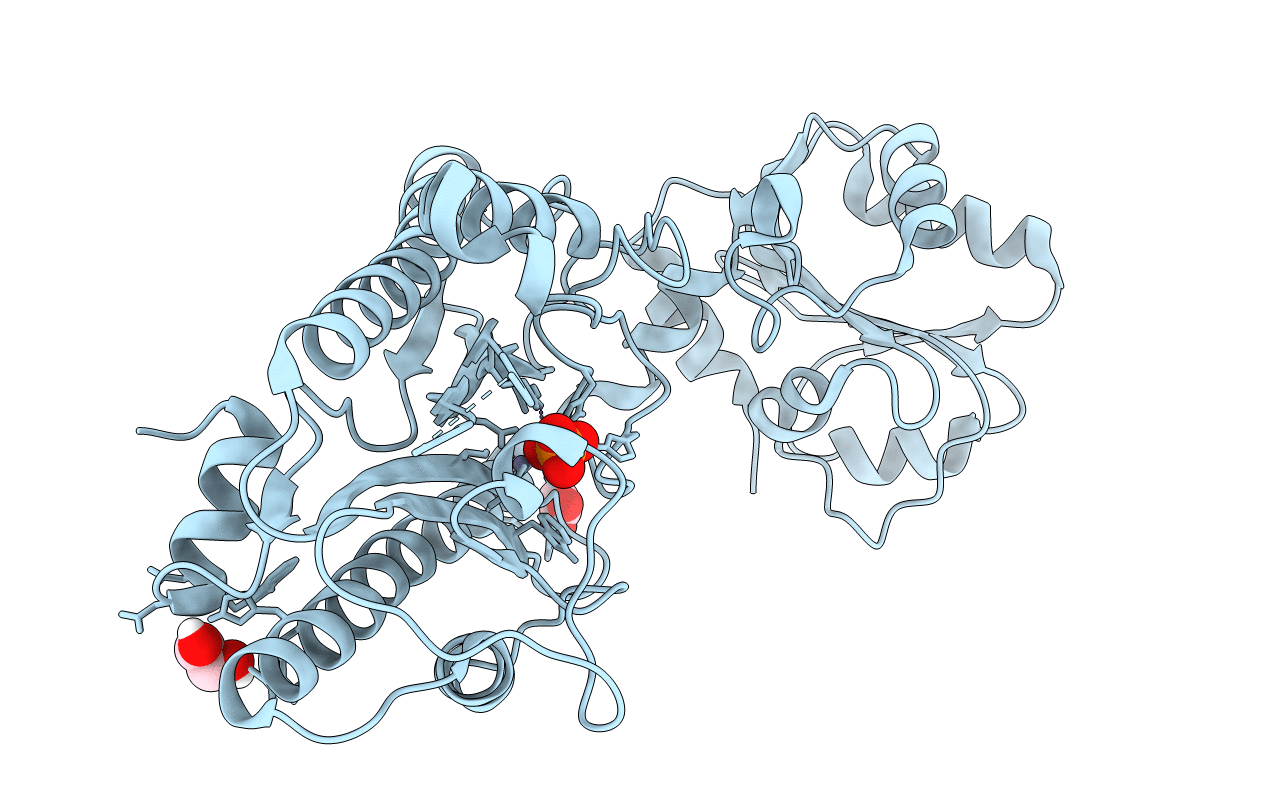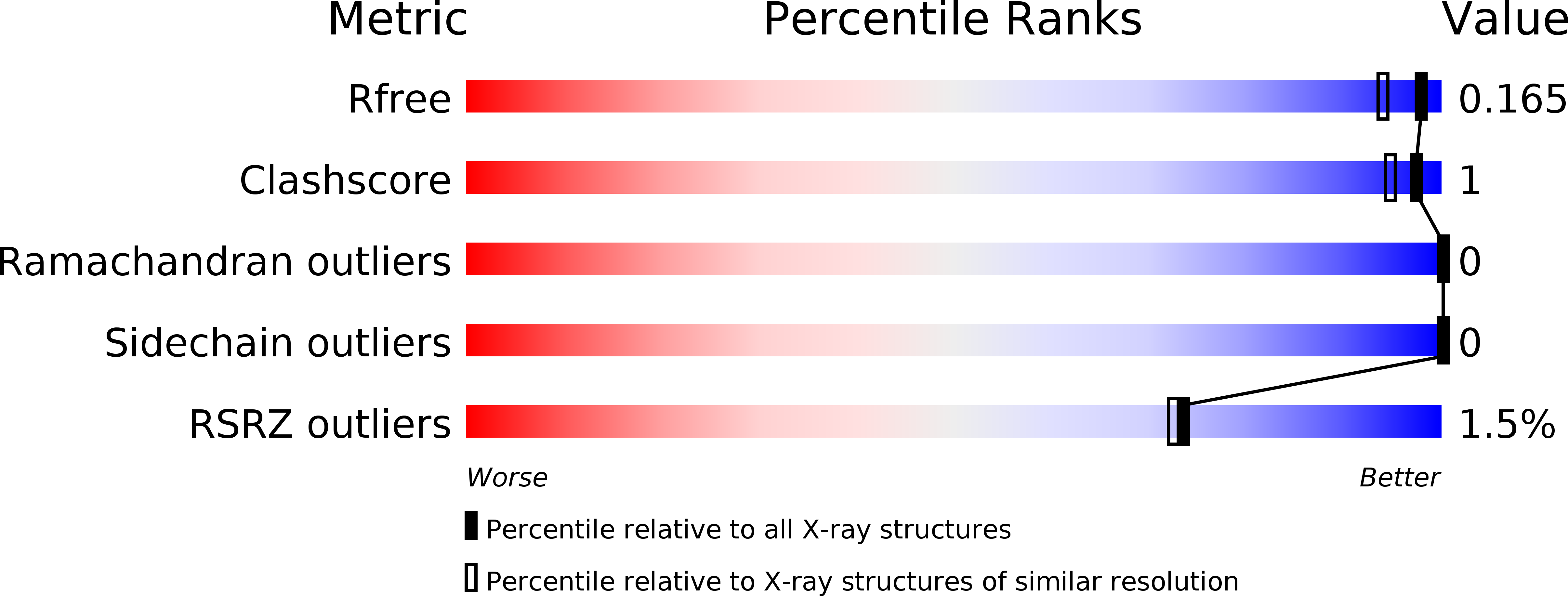
Deposition Date
2017-04-06
Release Date
2017-10-18
Last Version Date
2024-03-27
Entry Detail
PDB ID:
5XEV
Keywords:
Title:
Crystal Structure of a novel Xaa-Pro dipeptidase from Deinococcus radiodurans
Biological Source:
Source Organism:
Deinococcus radiodurans R1 (Taxon ID: 243230)
Host Organism:
Method Details:
Experimental Method:
Resolution:
1.40 Å
R-Value Free:
0.16
R-Value Work:
0.14
R-Value Observed:
0.14
Space Group:
C 1 2 1


